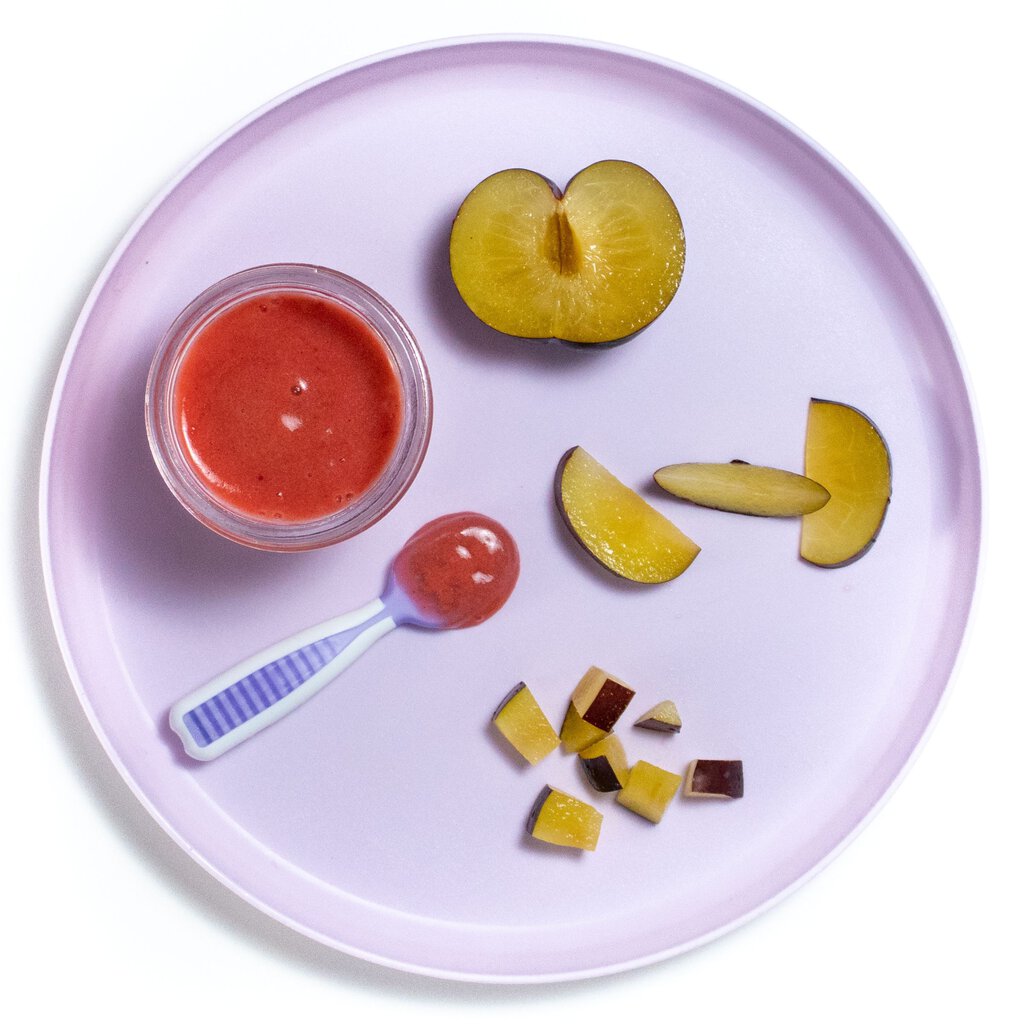In this guide, learn how to serve plums for your baby, for baby led weaning or making purees. They contain potassium and fiber and are a great first food for babies 6 months and up. Serve them as a baby food puree, as a solid for the finger food stage or for baby-led weaning.
Medically reviewed and cowritten by Jamie Johnson, Registered Dietitian Nutritionist (RDN), and Lauren Braaten, Pediatric Occupational Therapist (OT).
Plum Baby Food
Ever feel like you get in a fruit ‘rut’ when it comes to feeding your baby or toddler? I tend to find myself falling into a similar pattern of bananas, blueberries, avocado, etc…and then I remember all the other great fruits out there. Including plums!
Plums contain vitamins A, C and K to support a healthy, developing immune system. They also contain plentiful antioxidants and fiber, helping with digestion and relieving constipation.
If you’re wondering how to serve plums for baby-led weaning, we’ve got you covered. In this guide, we’ll cover all the information you need in order to safely serve plums to your baby. Learn about the nutritional benefits, FAQs, helpful tools, and expert feeding tips.
First time making homemade baby food? Then, I would suggest that you start by reading my very in-depth Guide on how to Make Homemade Baby Food – which goes over all the important information such as the best cooking tools to have on hand, safe storage, how to know when baby is ready for solids, how to introduce purees, the best first foods for baby, and more! If you are doing Baby-Led Weaning, then be sure to check out my Complete Guide to Baby-Led Weaning – which covers what exactly is baby-led weaning, to every parent’s concern of baby-led weaning and choking, this guide goes over it all. I will also share how to know when baby is ready for BLW, the top 10 best first foods, a helpful sample blw feeding schedule, helpful tools to have on hand, and much much more!
Want more information? Then make sure to check out my best-selling cookbook for even more information and recipes!
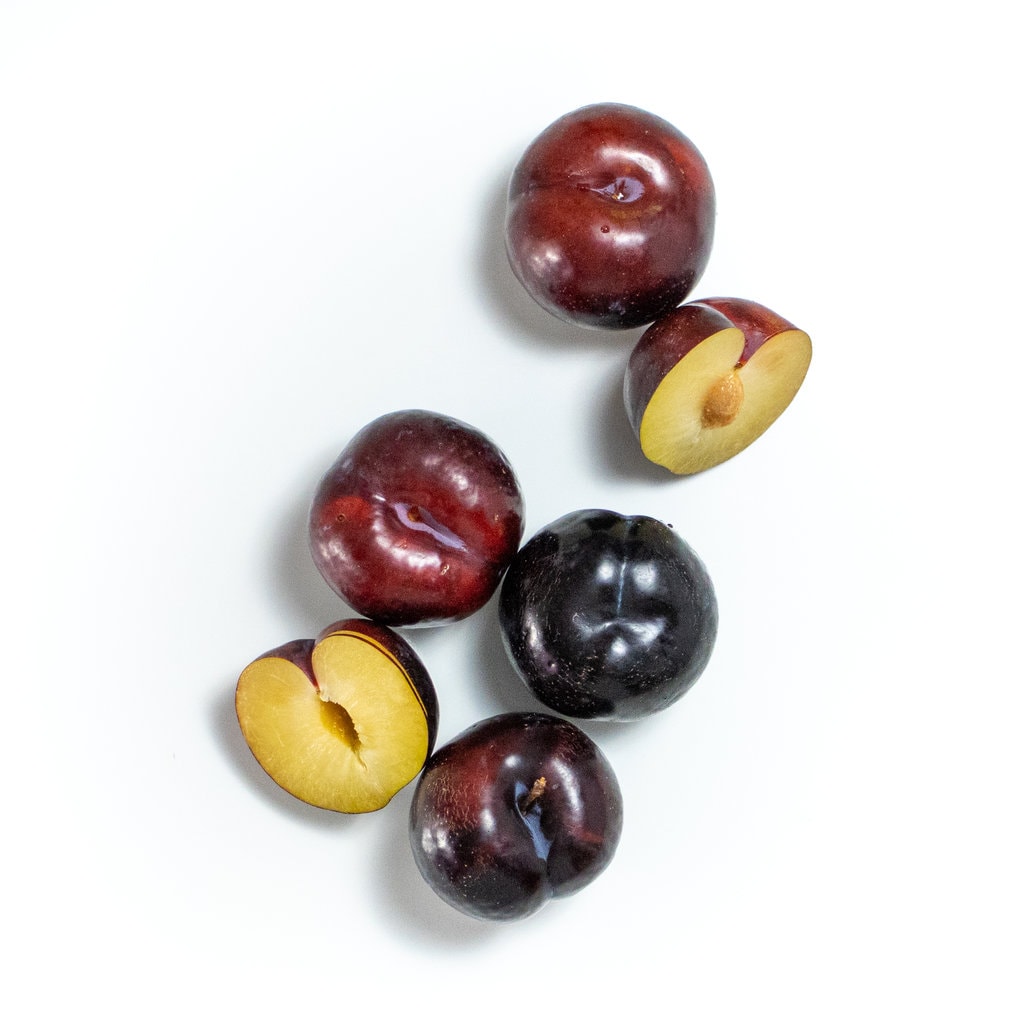
Reasons to Love Plums for Babies
- delicious baby food purees – 6+ months
- great for baby-led weaning – 6+ months
- also great for the finger food stage – 9+ months
- full of essential nutrients for baby
- easy stage one and combination puree
- different ways for baby to eat – spoon-fed or self-feed
- easy to make
Benefits of Plums
Plums should not be forgotten about, as they contain many vitamins and minerals and benefits for babies and toddlers!
- They are one of the “P” fruits which can help alleviate constipation, which is common when starting solids.
- They are high in vitamin C, important for immune health and for iron absorption.
- They are a good source of vitamin K, which helps with bone development and blood clotting for when baby gets a boo-boo.
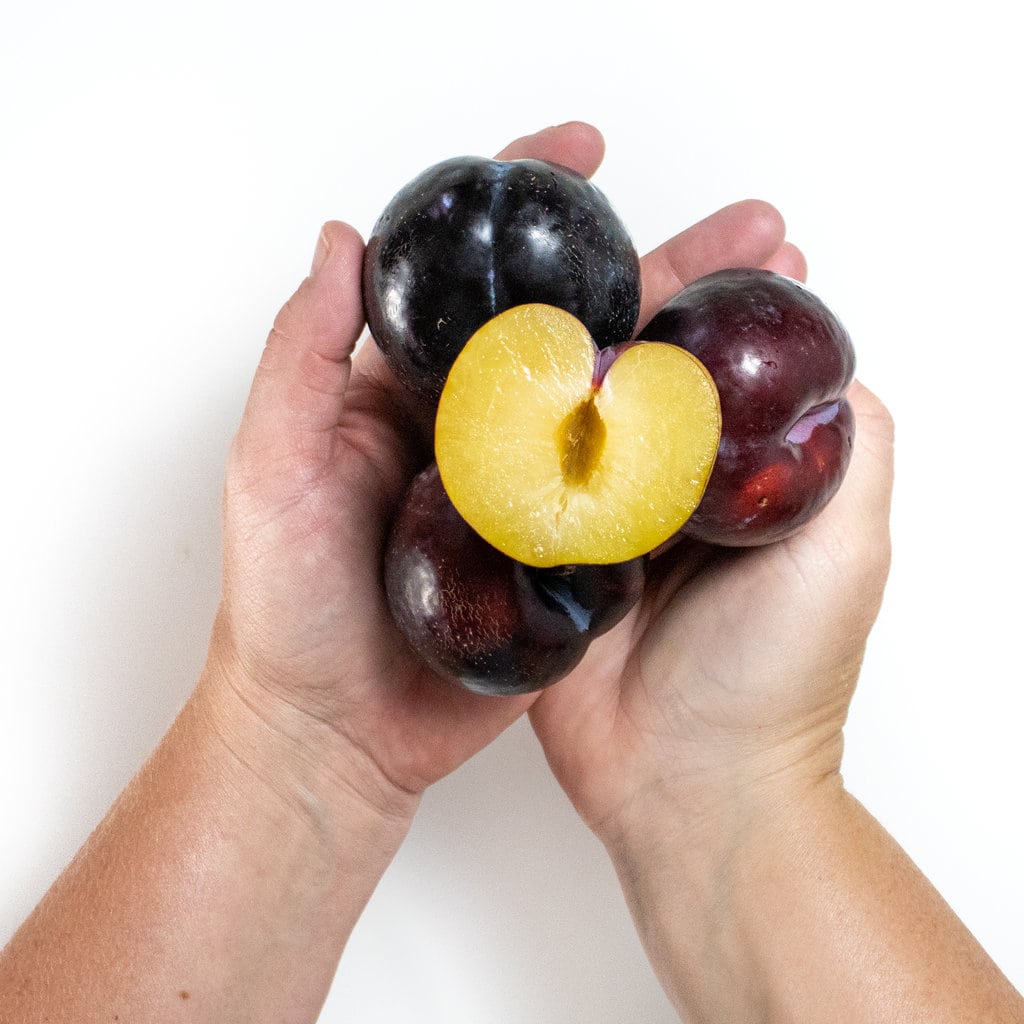
How to Pick Plums
Choosing plums at their peak ripeness will make them even more enjoyable. Here are some pointers to look for when picking plums:
- Overall appearance: Plums should be plump, without any shriveled skin, mushy spots or cuts. Different varieties of plums ripen to different colors, so this isn’t always the most efficient way of checking for ripeness.
- Weight: Hold the plum in the palm of your hand. A ripe plum should feel heavy for its size and yield to gentle pressure.
- Smell: A ripe plum emits a fresh, fruity, and sweet aroma, while an unripe plum does not.
Frequently Asked Questions
Plums can be introduced to baby as soon as they are ready to start solids, usually around 6 months of age.
Yes. Plums are often firm and small, which increases their choking risk. The hard pit inside of plums should also be removed before serving babies and toddlers. Prunes (dried plums) are also a choking hazard, so we recommend waiting to serve prunes until your child is very efficient in taking small bites off of larger pieces and chewing thoroughly.
No, plums are not a common allergen. As you would with introducing any new food, start by offering a small amount and monitor your baby as they eat for any adverse reactions.
No. In fact, plums are high in fiber which can help prevent constipation. However, consuming plums in large quantities can have a laxative effect, so start by offering a small amount and gradually increase serving sizes until you know how your baby responds.
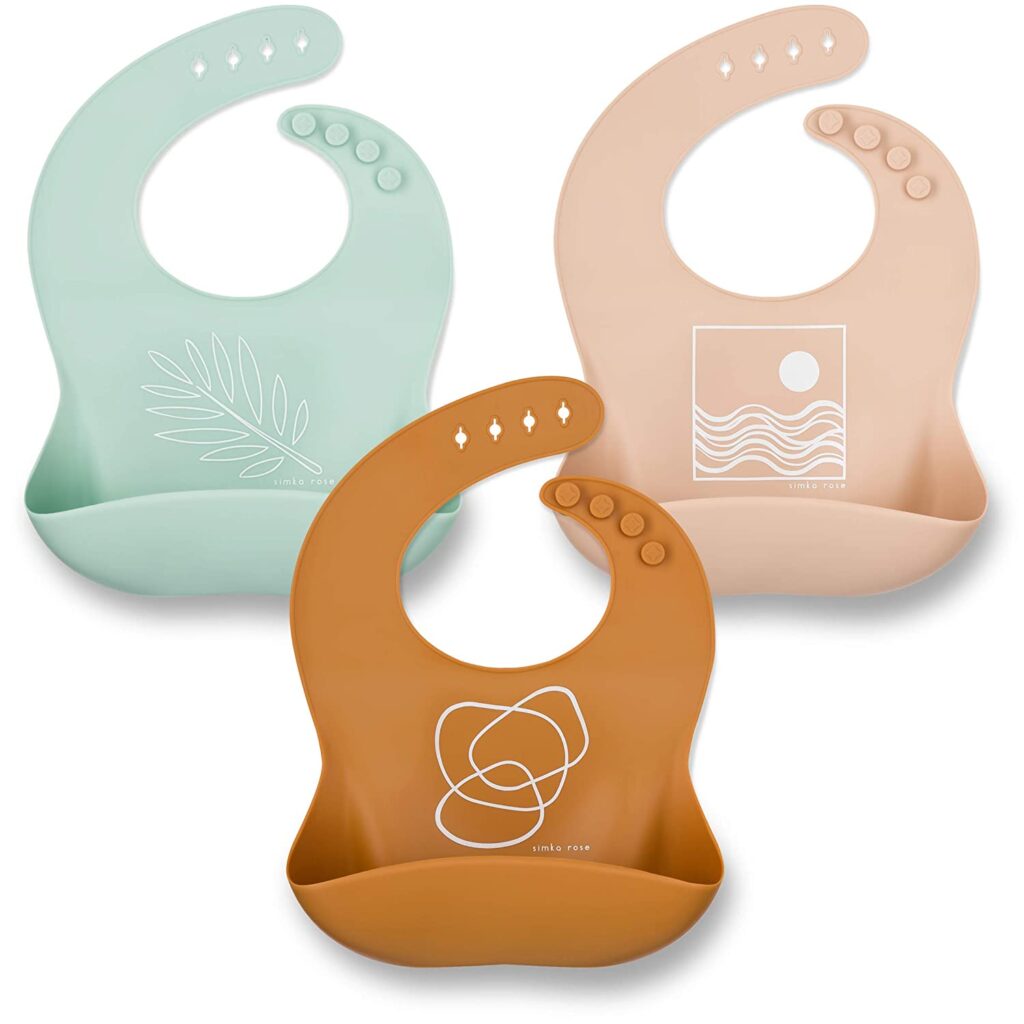
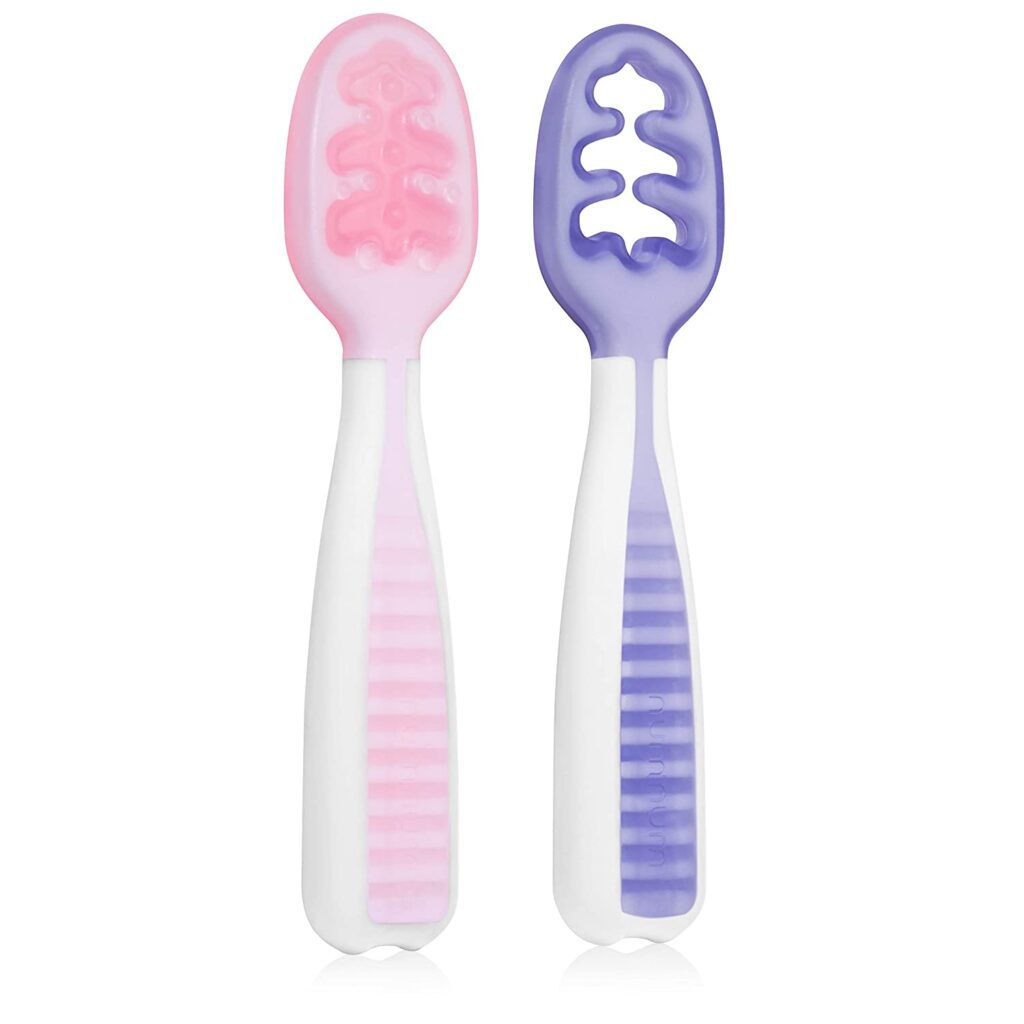
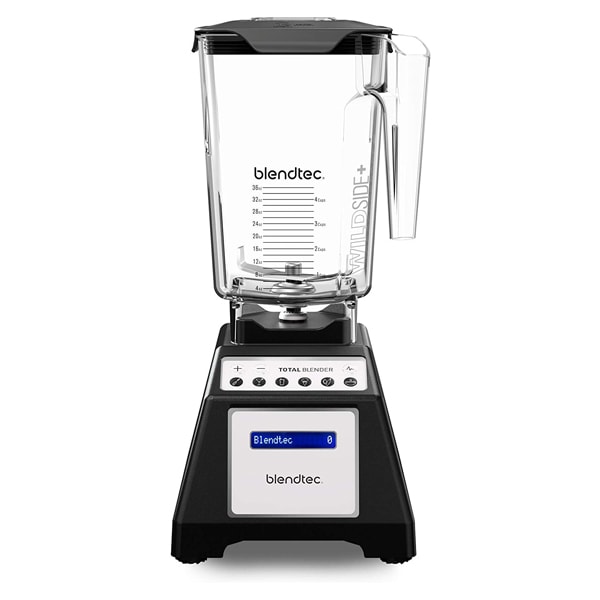
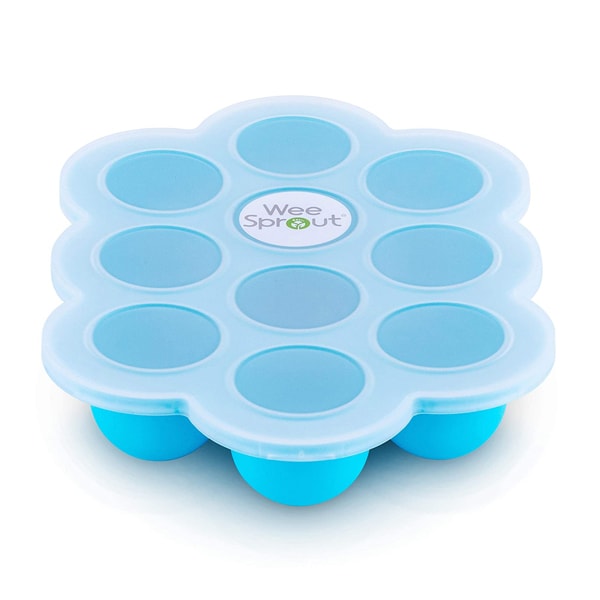
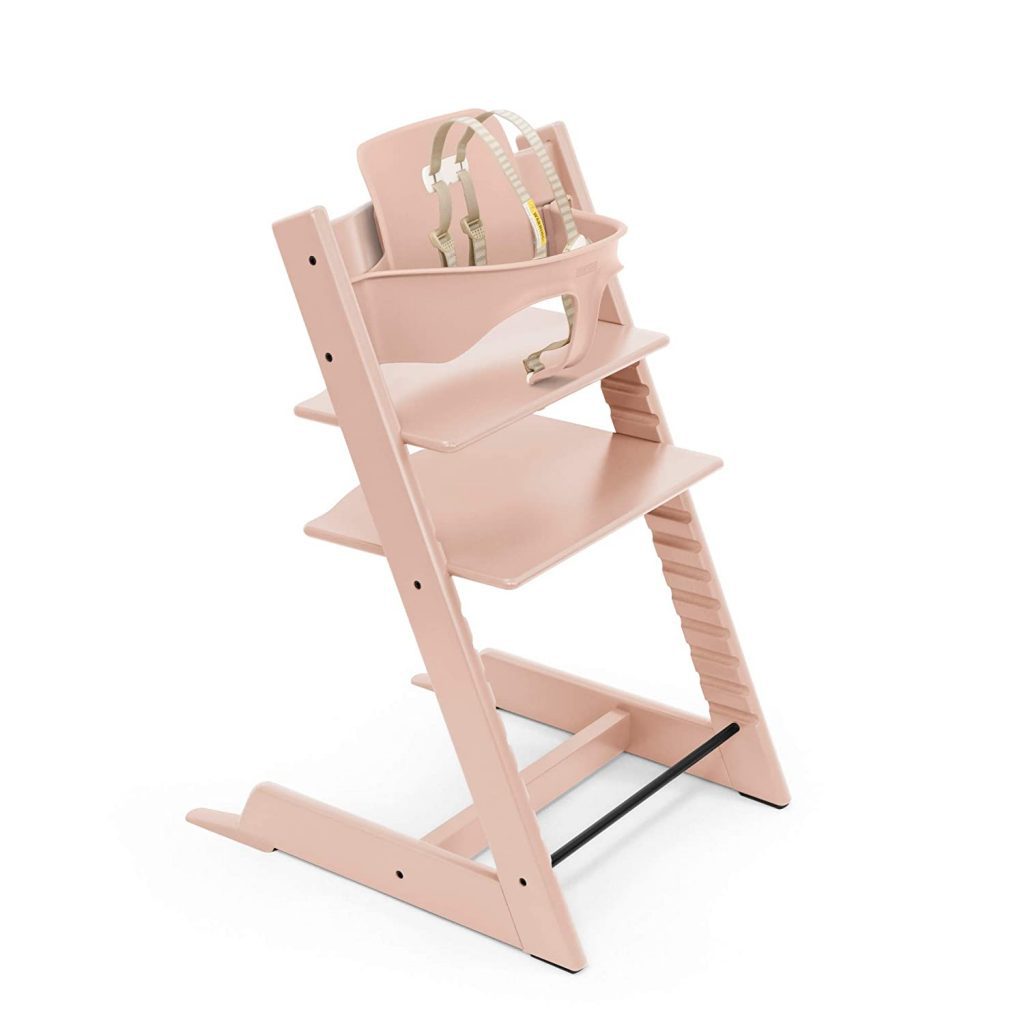
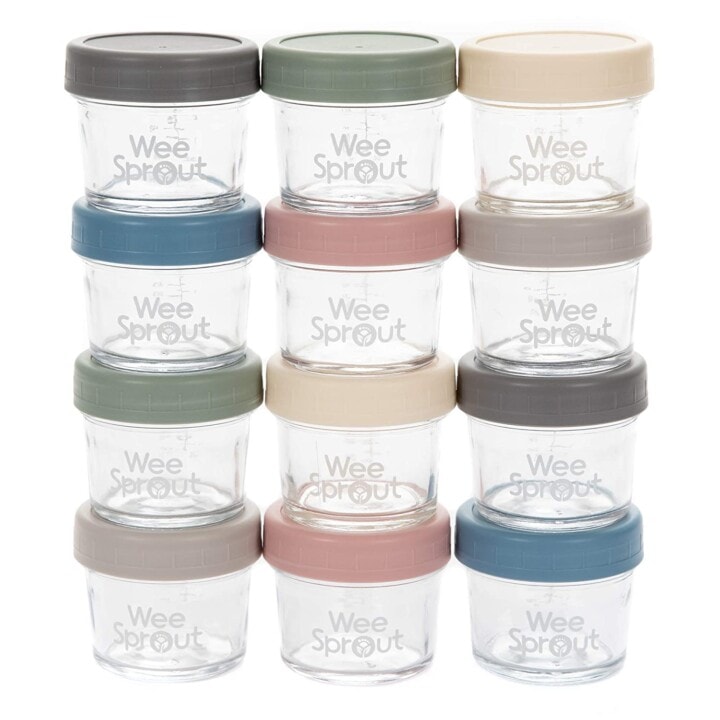
Tools Needed
These tools will make it a lot easier for you to serve plums to your baby. For more of my favorite kitchen tools, make sure to check out my shop.
Plum Baby Puree
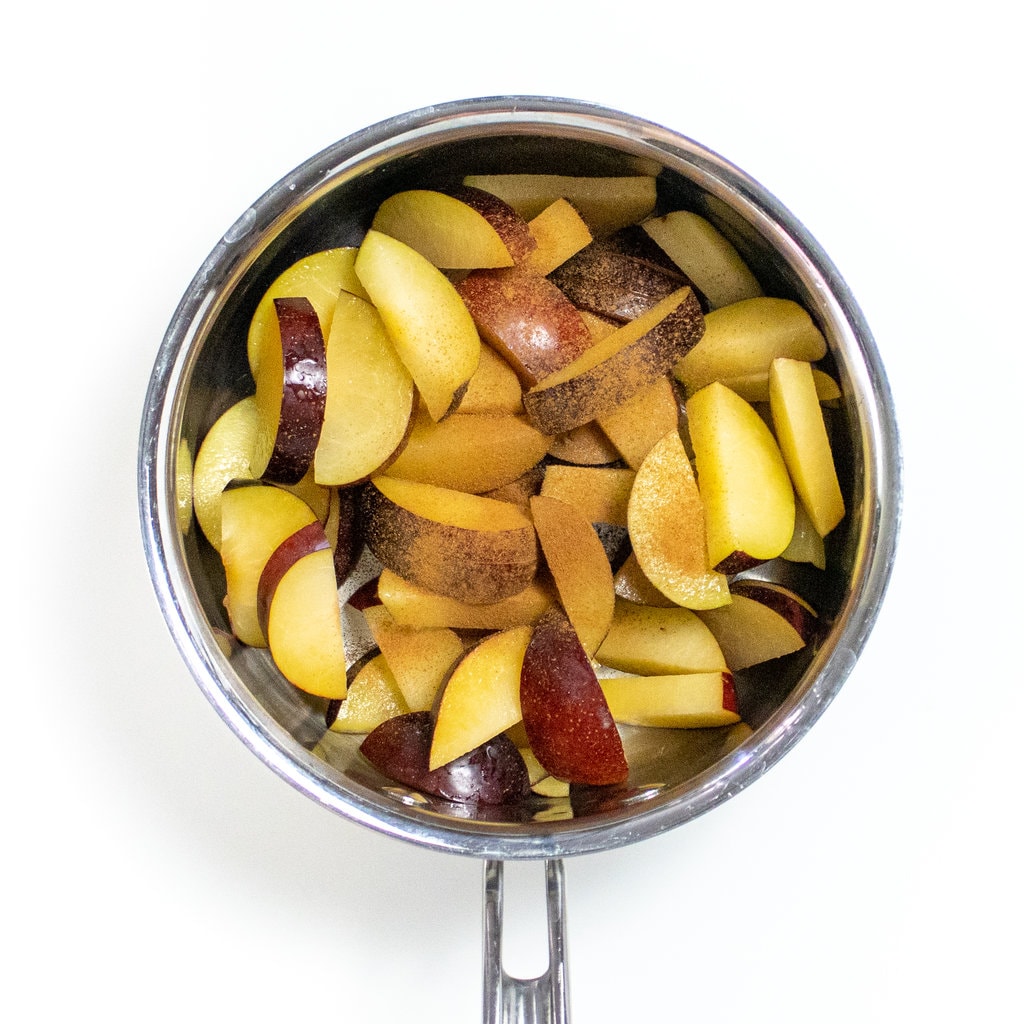
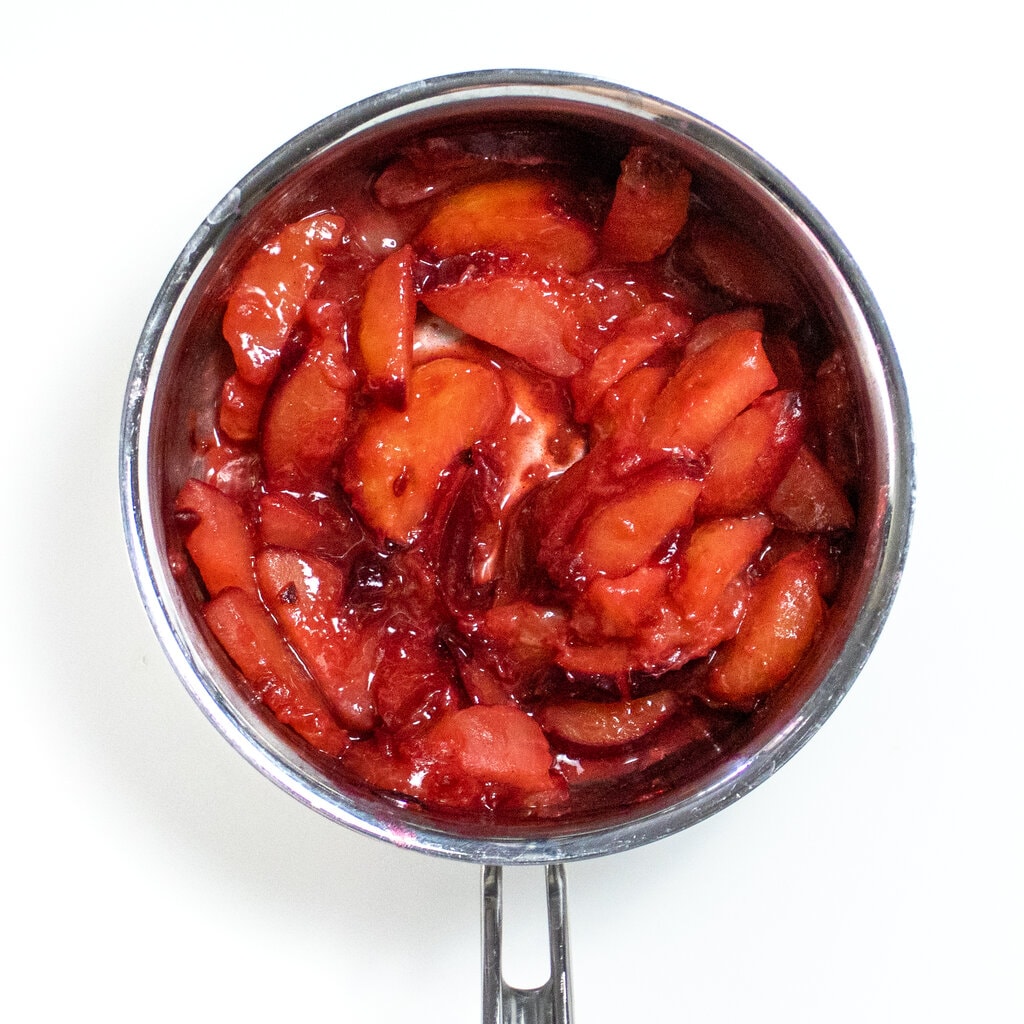
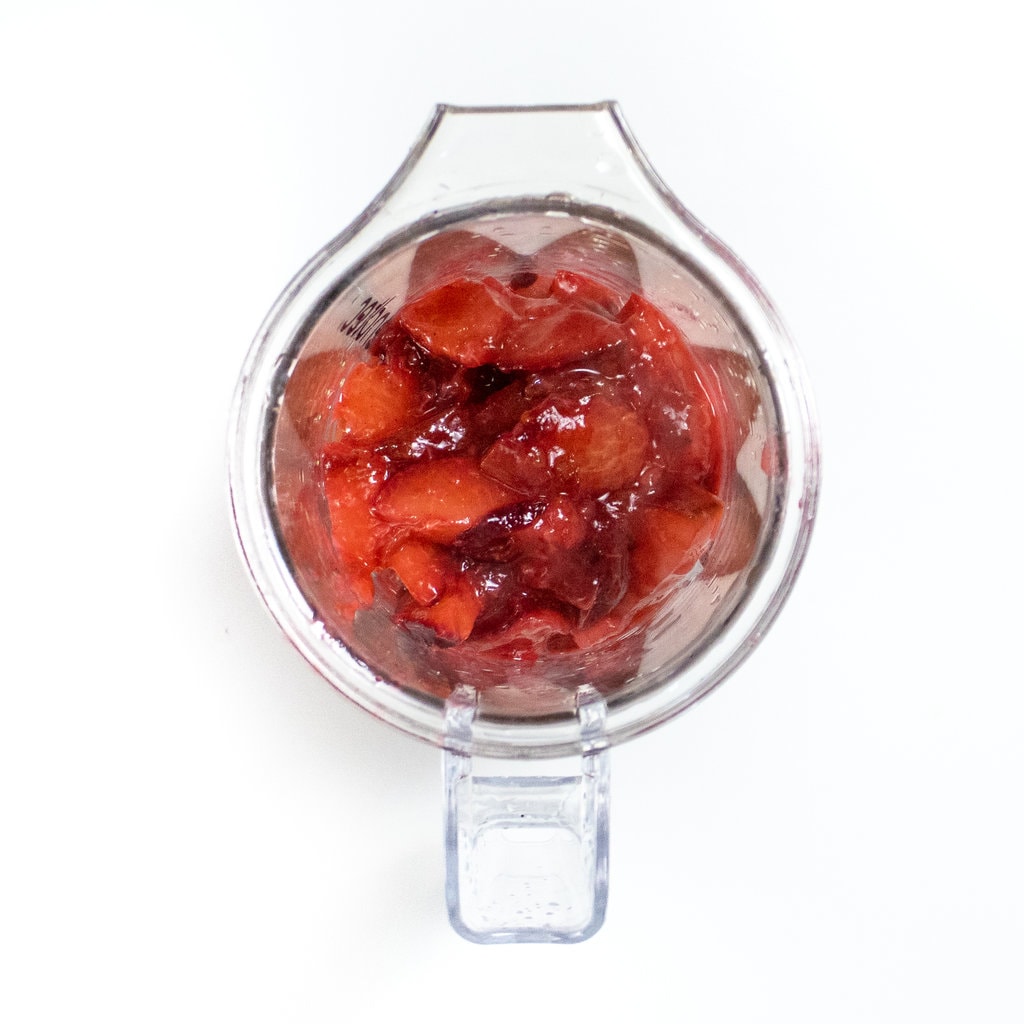
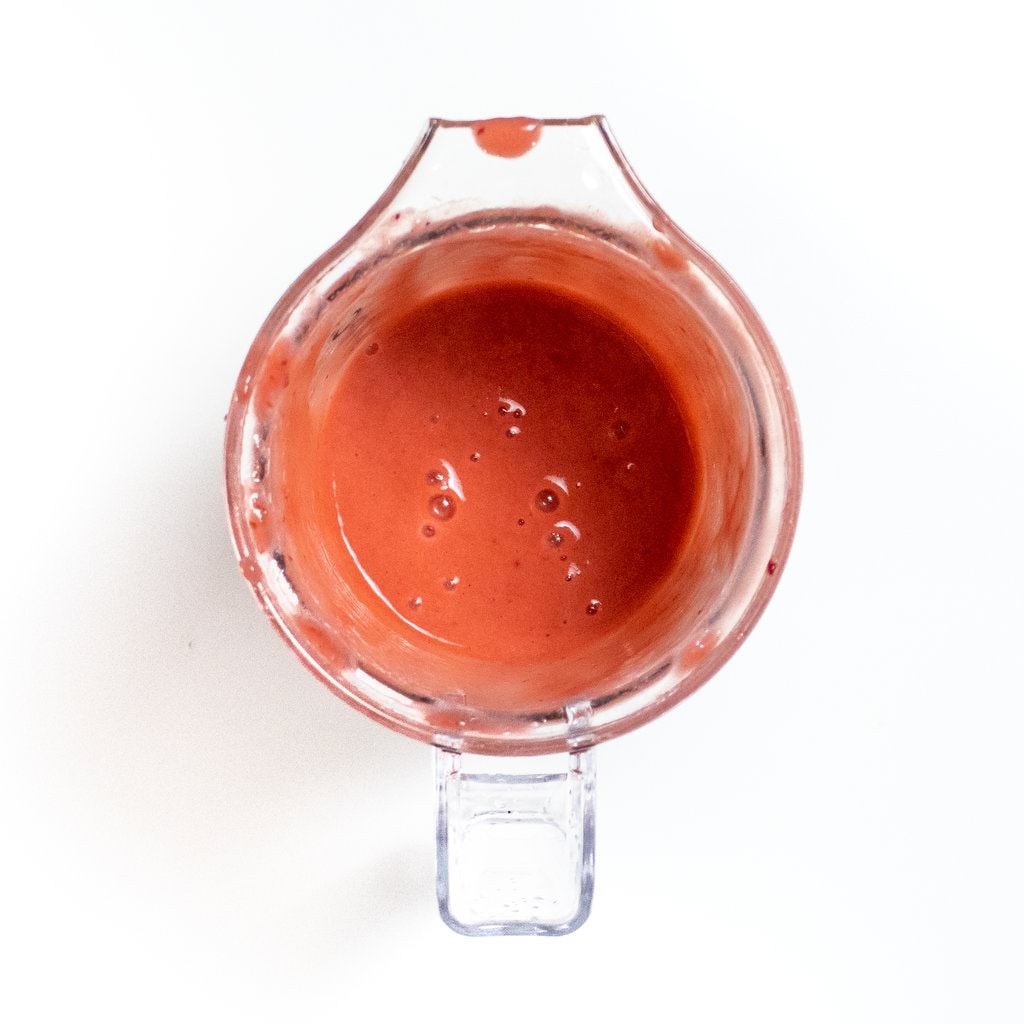
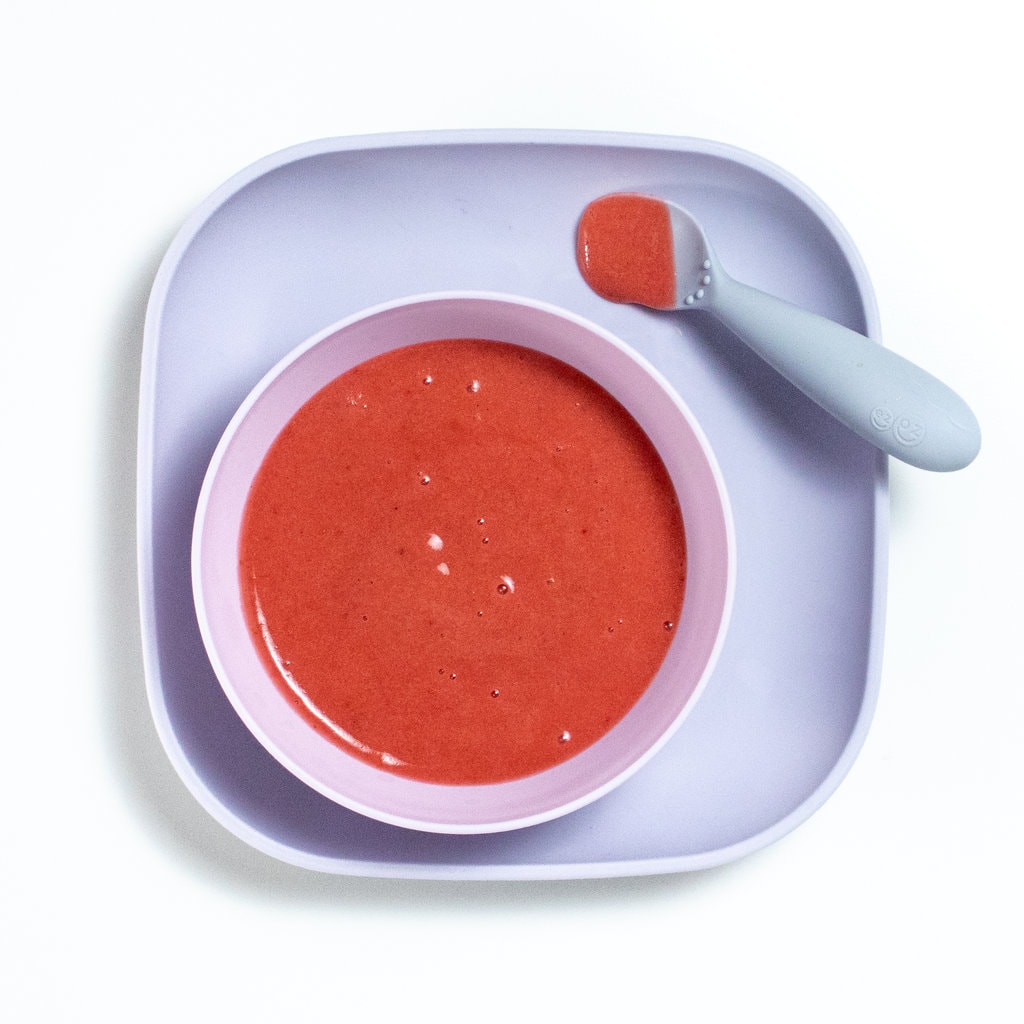
Making plum puree is easy! If your plums are super ripe and juicy you and just pit them before placing them into a food processor or blender on high. If your plums are not super ripe then you will want to gently simmer them.
- Pit and roughly chop the plums.
- Place the plums and a pinch of cinnamon into a medium saucepan.
- Heat on medium-low for 10 minutes, or until the plums are tender.
- Transfer to a blender and puree for 1-2 minutes or until super smooth.
- Serve to baby or store for another meal.
Tip: Plum puree is great for adding to yogurt, ricotta cheese, oatmeal, or mixing with other purees.
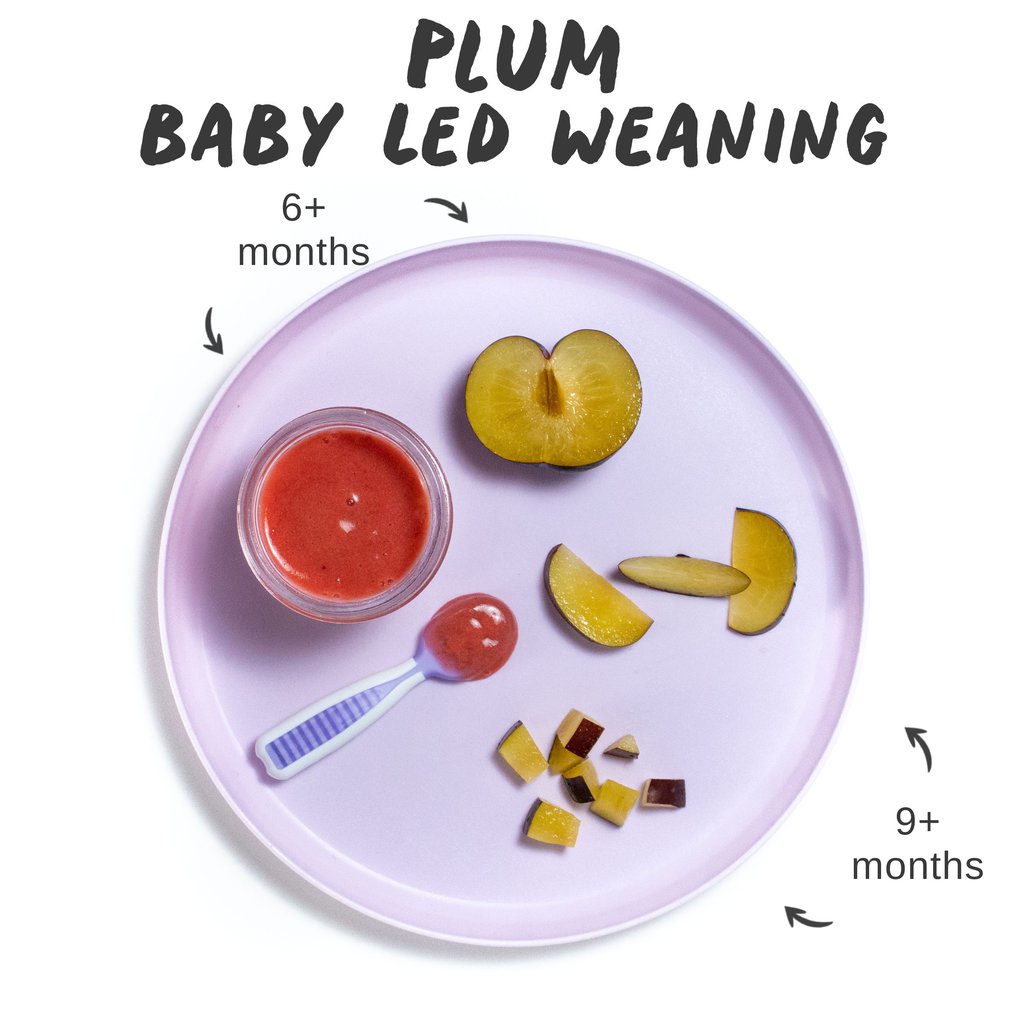
Plums for Baby-Led Weaning
Plums are a great food for your baby to self-feed, whether for baby-led weaning, which happens around 6 months of age, or during the finger foods stage at 9 months.
Halved, ripe (6-9 months): Cut soft, ripe plums in half and remove the pit. Baby will be able to pick up this larger piece easily. You can also leave the skin on (it’s edible).
Halved, sliced, or diced (9-12+ months): Serving smaller slices or bite sized pieces of plums will allow your baby to practice using their pincer grasp, which is developing at this age. You can serve plums with the skin on or if peeled, roll them in finely crushed nuts, shredded coconut or hemp seeds to help baby with grasping it.
Halved or whole (18-24 months): Depending on your toddler’s skill level, you can try offering either halved plums (pit removed) or a whole plum (with pit) so they can practice taking appropriately sized bites, chewing and swallowing. You can peel the skin or keep it on, but just know that it’s typical for toddlers to spit out the skin as they’re learning to eat. If offering a whole plum, it’s best to model eating one yourself, so that you can show them how to practice eating around this part.
Storage Instructions
Plum Puree
Refrigerator
You can store it in an airtight container in the fridge for up to 4 days.
Freezer
This puree can be frozen for up to 4 months.
- Spoon puree into a freezer storage container – do not overfill.
- Place the lid on the storage container or cover it with a piece of saran wrap and label it with the date and recipe name.
- Place the tray into the freezer and let freeze completely – preferably overnight.
- Pop out the baby food cubes and place them in a zip-lock baggie or stasher bag – don’t forget to re-label the baggie or stasher bag for future reference.
Baby-Led Weaning
You can store cut plums in an air-tight container in the fridge for up to 2 days.
Combination Purees
While Plum Baby Food is great by itself, it’s also super easy to mix and match with other nutrient-dense baby food purees. Give these fun flavor combos a try!
More Plum Recipes
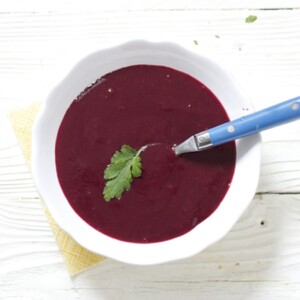
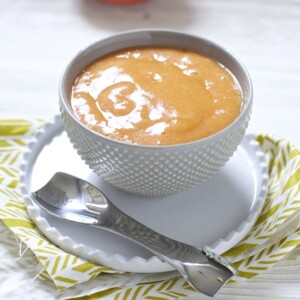
Expert Feeding Tips
- Pureed and mashed plums are also great for adding to yogurt, oatmeal, and other pureed fruits and veggies.
- Choosing organic plums is preferred, as many plums are heavily sprayed with pesticides. To minimize exposure, wash plums before serving.
- Frozen or canned plums can also be a healthy option. If choosing canned, look for “no-added sugar” cans or drain and rinse canned plums to remove any excess sugar.
- To remove the pit from a fresh plum, run a sharp knife all the way around the natural ‘dimple’ of the fruit. Twist the two halves in opposite directions, separate them and remove the pit.
Plum Baby Food Puree
- 5 plums, pitted and roughly sliced
- 1/8 tsp cinnamon
- 3 tbsp water
Plum for Baby-Led Weaning
Plums for Baby-Led Weaning
-
Serve to your baby in an age-appropriate way – either cut in half off of the pit, slices, or chopped into smaller pieces. You can also puree or mash the plum and serve to your baby on a self-feeding spoon.
Storage: you can store the plum puree in an air-tight container in the fridge for up to 4 days or in the freezer for up to 4 months. You can store the plum pieces in an air-tight container in the fridge for up to 2 days.


